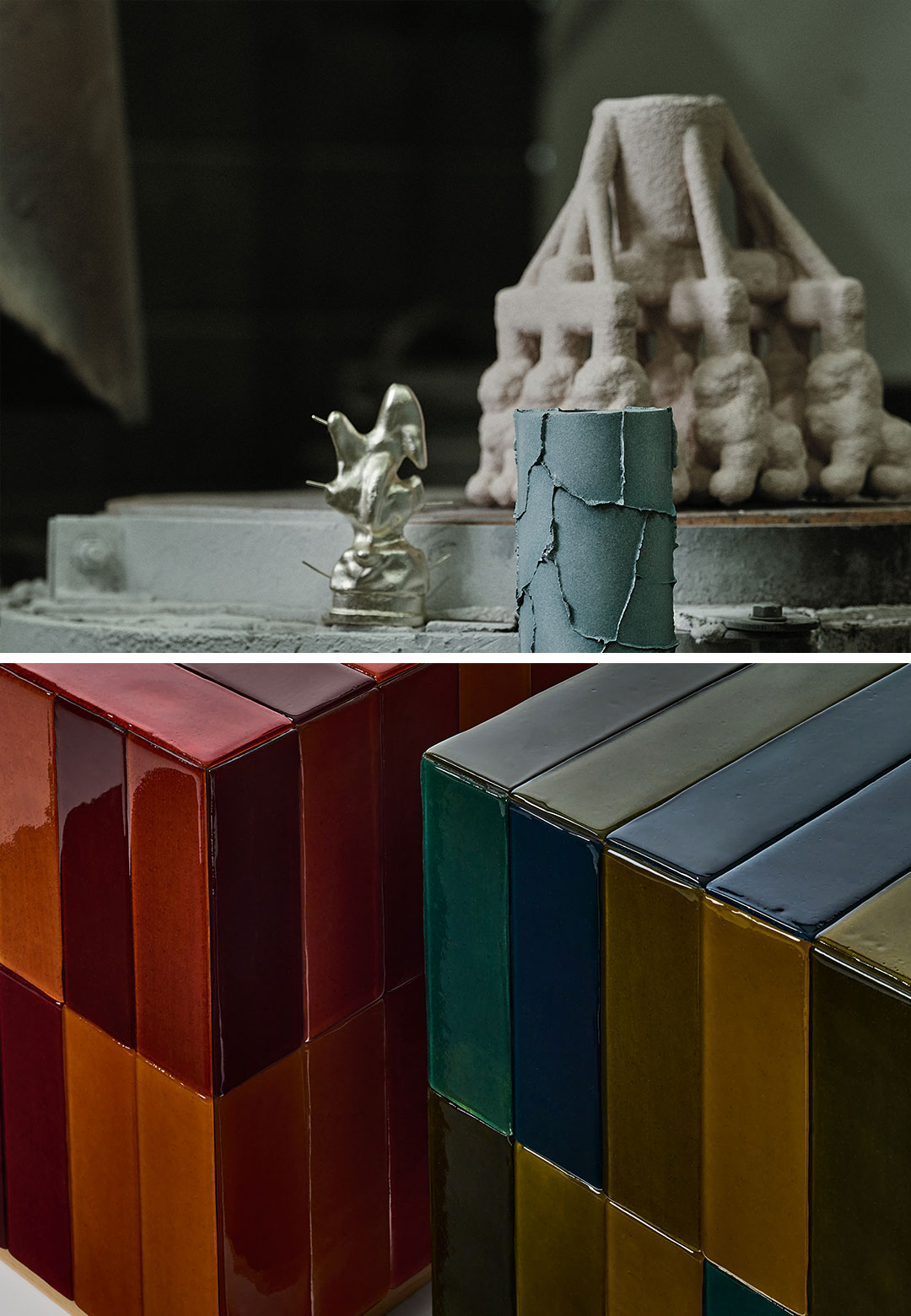Since its inception, we+ has extended a research-based approach to its experimental design oeuvre. The contemporary design studio dabbles with the many possibilities of alternative design that can coexist in harmony with the environment—viewing design as a responsibility over convenience or pragmatism. During the recently concluded edition of Milan Design Week, the Japan-based practice staged two projects tackling tradition, innovation and sustainability through disparate semantics.
With Unseen Objects, developed in collaboration with Takaoka city-based foundry Heiwa Gokin, we+ accentuates overlooked facets of casting culture. Titled SO-Colored, their second project presented at the design festival running from April 7 - 13, 2025, revealed the potential of natural microalgae colours at Galleria Rubin in Milan, Italy.
Casting techniques as art with Unseen Objects
Heiwa Gokin partnered with the design studio to present Unseen Objects during the design week, a collection of vases that reimagines the tools, textures and incidental forms intrinsic to the casting process. Drawing from Takaoka's 400-year legacy as Japan's centre of copperware casting, the project seeks to underline the quiet beauty within the mundane workings of this artisanal tradition. With a deep respect for craftsmanship, Unseen Objects transforms the functional into the expressive, offering a modern lens through which to appreciate the art of casting.
Through a series of immersive site visits and detailed research, we+ uncovered aesthetic potential in often-overlooked byproducts and tools of the casting process. The resulting six works—Casting Core, Rubber Mold for Lost Wax Casting, Ceramic Mold for Lost Wax Casting, Sand Residue, Burr and Iron Rod for Core Structure of Sand Mold—highlight the inherent artistry embedded in the craft's raw materials and techniques. Each piece elevates forms typically hidden or discarded: sand cores become sculptural designs, burrs are preserved for their accidental elegance and utility items such as rubber and ceramic moulds are recontextualised as delicate artefacts.
SO-Colored: the expressive potential of microalgae colours
Microalgae are omnipresent on the planet, from water and rocky surfaces to homes. These organisms that first emerged nearly 2.6 billion years ago play an intrinsic role in Earth's biodiversity, with numerous recent studies delving into their potential in diverse applications such as carbon dioxide absorption, alternative energy sources to petroleum, pharmaceuticals and functional foods. During the now-concluded design event, we+ introduced SO-Colored, a research project that explores the spectrum of colours of microalgae.
While commonly associated with shades of green, algae also display a vast variety of reds, yellows and blues, depending on their species and growth conditions. For the project, powdered microalgae are blended with naturally derived resins to develop an original material, which can then be used to craft objects. SO-Colored employs the natural pigments and colour properties of microalgae to formulate a sustainable and innovative colour source. Through the intervention, we+ investigates the uncharted expressive potential of microalgae-derived colour—a new possibility for future products, sustainable designs and material innovation at large.
Keep up with STIR’s coverage of Milan Design Week 2025, where we spotlight the most compelling exhibitions, presentations and installations from top studios, designers and brands. Dive into the highlights of Euroluce 2025 and explore all the design districts—Fuorisalone, 5Vie, Brera, Isola, Durini, and beyond—alongside the faceted programme of Salone del Mobile.Milano this year.






 Sign in with email
Sign in with email










What do you think?